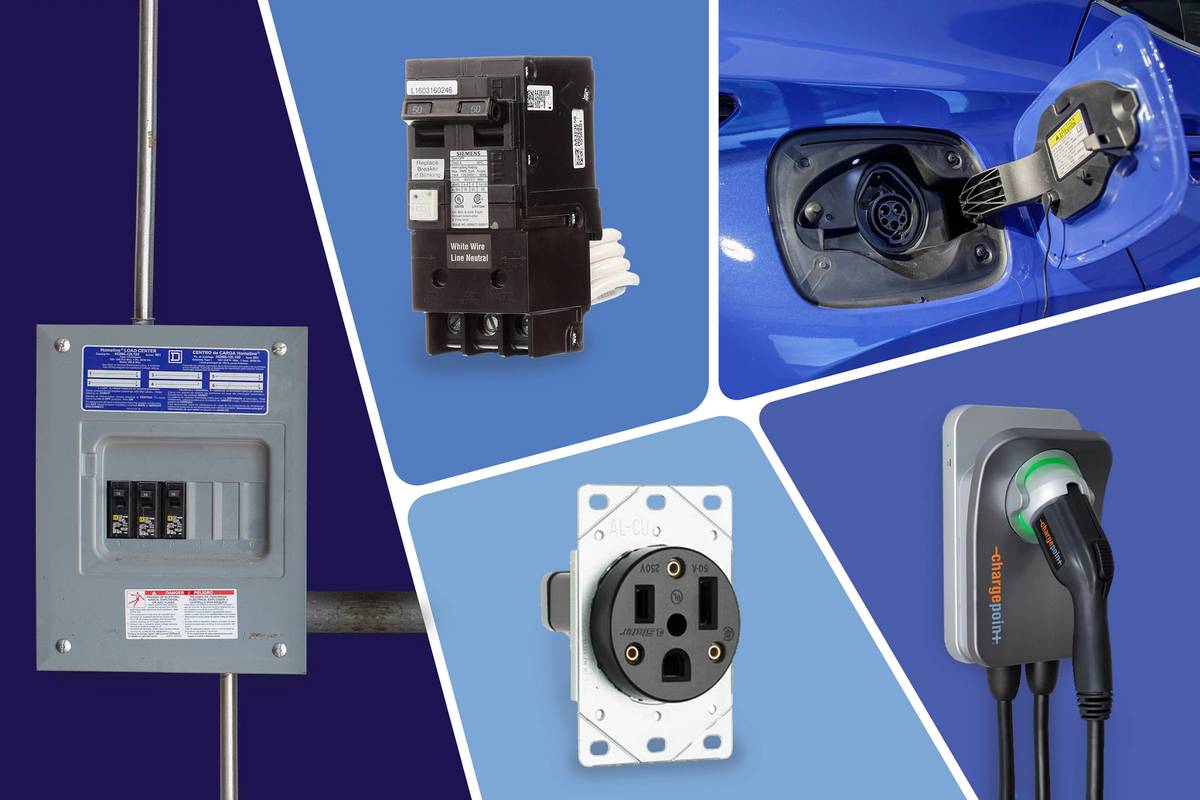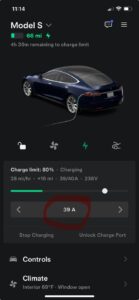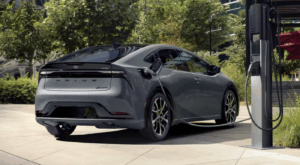Your Tesla charges slowly at home due to several reasons. It could be your charging setup, the power supply, or even software settings.
Let’s explore these factors to understand what might be causing the delay. Many Tesla owners enjoy the convenience of home charging. But when your car charges slower than expected, it can be frustrating. The speed of charging depends on the power source and the charger type.
Sometimes, the issue lies in the home’s electrical system. Other times, it’s about the car’s settings or updates. Weather can also play a role, as colder temperatures affect charging speed. Understanding these aspects can help identify the problem. This knowledge can also guide you in optimizing your home charging experience. Let’s dive deeper to uncover the reasons behind slow charging and how to fix them.

Credit: www.reddit.com
Common Reasons For Slow Charging
Owning a Tesla is a thrilling experience, but slow charging at home can be frustrating. Understanding the reasons behind sluggish charging speeds can help you resolve them quickly. By zeroing in on common issues, you can ensure your Tesla charges efficiently and smoothly at home.
Power Supply Issues
One of the main culprits for slow charging could be your home’s power supply. If the voltage is not stable or lower than needed, your Tesla’s charging speed will drop significantly. Check your home’s electrical panel to confirm it delivers the required power output.
Have you ever noticed flickering lights when charging your Tesla? This could be a sign of an inadequate power supply. It might be worth getting an electrician to assess your setup to ensure it can handle the demand.
Cable And Connector Problems
Another factor affecting charging speed is the condition of your charging cable and connector. Damaged or worn cables can slow down charging or even pose a safety risk. Inspect your cables regularly for any visible wear and tear or overheating.
How often do you clean your connector? Dirt or debris can obstruct the connection, leading to slower charging. Regular cleaning of the connector can maintain optimal contact and improve charging efficiency.
These issues can be easily resolved with regular maintenance and checks. Are you ready to tackle these common problems head-on and enhance your Tesla’s charging performance at home?

Credit: www.cars.com
Assessing Home Electrical Setup
Experiencing slow Tesla charging at home often points to the electrical setup. Checking your outlet’s voltage and amperage can provide answers. Ensuring your setup meets Tesla’s requirements can significantly improve charging speed.
When your Tesla is charging slowly at home, it might be time to take a closer look at your home’s electrical setup. Your charging speed is heavily influenced by the capacity of your electrical system. Ensuring that your home is properly equipped can make all the difference in having a fully charged vehicle when you need it. ###Checking Circuit Capacity
Your circuit’s capacity plays a crucial role in how quickly your Tesla charges. If the circuit is overloaded, it can slow down the charging process. An easy way to assess this is by checking your breaker box. See if other high-demand appliances, like air conditioners or ovens, are sharing the same circuit as your charger. If they are, you might need to dedicate a separate circuit for your Tesla. This ensures that the car gets the full power it needs without competition from other devices. ###Inspecting Wiring Conditions
The condition of your home’s wiring can also impact charging speed. Old or damaged wiring may not handle the power demands of a Tesla charger efficiently. Have you checked the wiring recently? Ensuring that the wiring is up to date and in good condition can prevent slow charging issues. It might be worth getting a professional electrician to inspect your wiring. Sometimes, a simple upgrade can make a significant difference in charging performance. By understanding and optimizing your home electrical setup, you can improve your Tesla’s charging speed. Are there adjustments you can make today for a faster charge?Understanding Tesla Charging Options
Charging your Tesla at home should be a breeze, but sometimes, slow charging speeds can turn your excitement into frustration. Understanding Tesla charging options can help you optimize your setup for quicker and more efficient charging. Let’s explore the specifications of standard chargers and how upgrading to a faster charger can make a difference.
Standard Charger Specifications
Your Tesla likely came with a standard Mobile Connector, which is designed to plug into a regular household outlet. This setup offers convenience, but it might not deliver the speed you expect. The Mobile Connector typically provides around 3 to 5 miles of range per hour of charging. This can be too slow if you’re planning a long drive the next day or need to use your car frequently.
Many users find this pace acceptable for overnight charging, but if you’re in a rush, it can feel like watching paint dry. Consider whether your daily driving habits align with this slow but steady charge. If not, it might be time to explore other options that suit your needs better.
Upgrading To A Faster Charger
If your Tesla’s charging speed is a bottleneck in your daily routine, upgrading to a faster charger could be a game changer. Installing a Wall Connector can significantly boost your charging speed, providing up to 44 miles of range per hour. This upgrade can cut down your charging time drastically, making it easier to fit charging into your busy schedule.
Think about how much time you spend waiting for your car to charge. Is it worth the investment to install a Wall Connector? Many Tesla owners find the efficiency and speed worth every penny, especially when they need to hit the road at a moment’s notice. Consider the convenience of waking up to a fully charged vehicle every morning.
Have you ever found yourself waiting impatiently for your car to charge while envisioning the freedom of faster charging? It’s important to assess whether your current setup meets your needs or if an upgrade is the right move for you.

Credit: www.teslaacessories.com
Evaluating External Factors
Charging your Tesla at home can sometimes be slower than expected. Several external factors may influence this. Understanding these can help optimize your charging experience.
Weather And Temperature Effects
Weather impacts charging speed significantly. Cold temperatures slow down the charging process. Batteries work efficiently in mild climates. Extreme heat can also affect charging speed. Consider the garage temperature for optimal charging.
Impact Of Peak Usage Times
Electricity demand fluctuates throughout the day. High demand periods can slow down charging. Peak times often occur in the evening. Charging during off-peak hours might be faster. Adjusting your charging schedule can improve speed.
Optimizing Charging Habits
Charging a Tesla at home should be simple and efficient. Yet, slow charging speeds can frustrate many. Optimizing your charging habits can make a big difference. Small changes help improve charging times. They also ensure efficient energy use.
Scheduling Charging Sessions
Scheduling your charging sessions can enhance efficiency. Begin by setting specific times to charge your Tesla. Charging during off-peak hours can save money. It also allows for faster charging speeds. Many electric companies offer lower rates at night. This reduces costs and speeds up the charging process.
Balancing Household Power Usage
Balancing your household power usage is essential. High electricity use can slow down charging. Try to reduce appliance use during charging. Avoid running the dishwasher or washer simultaneously. This ensures your Tesla gets the power it needs. Prioritize your Tesla’s charging over other devices. This helps maintain optimal charging speeds.
Troubleshooting Hardware Issues
Experiencing slow charging at home with your Tesla? Check your power source and charging cable for issues. Old wiring or insufficient amperage can affect charging speed. Consider upgrading your outlet or consulting an electrician for solutions.
Having trouble with your Tesla charging slowly at home? It can be frustrating, especially when you’re eager to hit the road. Often, the issue might not be with your vehicle but with the hardware involved in the charging process. Troubleshooting hardware issues can help you identify the root cause and get your Tesla back to charging at optimal speeds. Let’s explore two key areas to check: charger malfunctions and damaged cables.Diagnosing Charger Malfunctions
Start by examining your home charging station. Is it functioning as it should? Plugging in your Tesla and noticing that it isn’t charging efficiently might indicate a malfunction. Observe the lights on your charger. Blinking or unusual colors could signal a problem. Refer to your charger’s manual to decode these signals. Try using a different outlet. Sometimes, the issue could be as simple as a faulty power source. If your car charges faster in another outlet, you might have pinpointed the problem.Repairing Damaged Cables
Have you checked your charging cables lately? Damaged cables can drastically reduce charging speed. Look for visible signs of wear like fraying or cuts. Feel the cable while it’s in use. Is it getting unusually hot? This could indicate internal damage that isn’t immediately visible. Swapping out a suspect cable for a new or known good one can be a quick way to test if it’s the culprit. You might be surprised how often a simple cable swap resolves charging issues. Addressing these hardware issues can often resolve the problem of slow charging at home. Have you encountered any other peculiar problems when charging your Tesla? Share your experiences and solutions in the comments!Techniques For Boosting Charging Speed
Charging a Tesla at home can sometimes be slower than expected. Several factors can impact charging speed. Fortunately, there are techniques to help boost charging efficiency. These methods can make a significant difference in your charging experience. Let’s explore some practical tips to enhance charging speed.
Using High-quality Accessories
High-quality accessories can greatly improve charging speed. Invest in durable and reliable charging cables. Cheap cables may not deliver sufficient power. A robust cable ensures optimal energy flow. Wall connectors are also vital. Choose a connector that supports higher amperage. This can significantly reduce charging time. Quality connectors are a smart choice for faster charging.
Implementing Smart Charging Solutions
Smart charging solutions offer advanced ways to boost efficiency. Using a smart charger can optimize power delivery. These chargers adjust based on electricity availability. They help manage energy usage effectively. Scheduling charging during off-peak hours is beneficial. It reduces strain on the grid and enhances speed. Smart solutions provide flexibility and improved performance.
Seeking Professional Assistance
Experiencing slow charging at home can be frustrating. Checking your home setup is essential. Professional assistance might identify issues with electrical connections or charging equipment, ensuring your Tesla charges efficiently.
If you’ve ever found yourself tapping your foot while waiting for your Tesla to charge at home, you’re not alone. Charging issues can be frustrating, especially when you have places to be. Sometimes, the solution may not be as simple as adjusting a setting or checking your connections. In such cases, seeking professional assistance can make all the difference. Whether you’re consulting an electrician or contacting Tesla support, these experts can help diagnose and fix the problem, ensuring your charging setup is as efficient as possible.Consulting Electricians
An experienced electrician can be a valuable ally in solving your slow charging dilemma. They understand the intricacies of home electrical systems and can pinpoint potential issues. For example, they can assess whether your home’s wiring is up to the task of supporting high-power charging. If you’ve recently moved into a new home or upgraded your electrical system, there might be compatibility concerns. An electrician can evaluate your setup and recommend necessary upgrades. They can also ensure that your charging station is installed correctly, which can significantly improve charging speed. Don’t underestimate the importance of safety. Poorly installed or outdated electrical systems can pose risks, not just to your Tesla, but to your home. A professional assessment ensures everything is up to code and safe for use.Contacting Tesla Support
When in doubt, reaching out to Tesla support can provide clarity and peace of mind. Tesla’s team is well-versed in troubleshooting charging issues and can offer specific advice tailored to your vehicle model. Tesla support can remotely analyze your car’s charging data to identify any anomalies. This analysis can reveal if there’s a problem with the vehicle itself, or if the issue lies with your home setup. It’s a step worth taking before diving into costly upgrades. You might be surprised by how quickly Tesla’s support team can resolve issues. Many owners have shared experiences of swift solutions provided by helpful support staff. It’s always worth exploring this option if you’re feeling stuck. Have you considered how professional assistance might streamline your charging process? Taking these steps can save you time and stress, ensuring your Tesla is always ready for the road ahead.Frequently Asked Questions
Why Is My Tesla Charging Slower Than Normal At Home?
Your Tesla might charge slower due to low voltage, cold battery, or a malfunctioning charger. Check your home electrical system, ensure your battery is warm, and inspect the charger for issues. Upgrading your charging equipment or consulting an electrician can help optimize charging speed.
How Can I Get My Tesla To Charge Faster At Home?
Install a Tesla Wall Connector for faster charging at home. Upgrade your electrical panel for higher amperage. Use a dedicated 240V outlet to maximize charging speed. Ensure the charging cable is in good condition for optimal performance. Regularly update your Tesla software for improved charging efficiency.
How Do I Increase The Charging Speed On My Tesla?
Use a Tesla Supercharger for faster charging. Ensure your battery is warm before charging. Update your Tesla software. Use a high-amperage home charger. Reduce energy consumption during charging by turning off unnecessary features.
Why Is My Ev Charging So Slow At Home?
Your EV may charge slowly due to a low amp outlet, outdated charger, or insufficient home power supply. Check your charging station compatibility and consider upgrading your home electrical setup for faster charging. Ensure your EV’s onboard charger matches your home’s charging capacity for optimal speed.
Conclusion
Slow Tesla charging at home can be frustrating. Factors like power supply affect speed. Check your home’s electrical capacity. Use the correct charging equipment. Inspect cables and connections regularly. Software updates may help improve charging performance. Understanding these elements can enhance charging efficiency.
Make adjustments where needed. Consult Tesla support if issues persist. They can offer guidance specific to your model. Ensure your setup is optimal for faster charging. A little attention goes a long way. Enjoy smoother charging sessions at home.


